Contents
- Early History
- Colonial History
- Local Figures & Organizations
- Nana Patil
- Karmaveer Bhaurao Patil
- Post-Independence Era and Contemporary Educational Infrastructure
- Primary & Secondary Education
- Institutions of Higher Learning
- Chhatrapati Shivaji College
- Yashwantrao Chavan Institute of Science, Satara
- Dhananjay Gadgil College of Commerce
- Ismailsaheb Mulla Law College
- Prominent Figures & Organizations
- Yashwantrao Chavan
- Graphs
- Enrollment and Dropout Rate
- A. Student Enrollment Numbers
- B. Student Enrollment (Class-Wise)
- C. Student Enrollment (Gender-Wise)
- D. Student Enrollment (By School Management Type)
- E. Drop Out Rate (By Schooling Level)
- F. Drop Out Rate (By Gender)
- Schools
- A. No. of Schools
- B. No. of Schools (Filtered by Gender Mix)
- C. No. of Schools (By School Management Type)
- Teachers
- A. No. of Teachers
- B. No. of Teachers (By School Management Type)
- C. No. of Teachers (Male vs Female)
- D. Education Level of Teachers
- Sources
SATARA
Education
Last updated on 28 July 2025. Help us improve the information on this page by clicking on suggest edits or writing to us.
The educational framework of Satara aligns with the broader structure of the Indian education system, encompassing pre-primary, primary, secondary, and higher education. However, its history extends well beyond this contemporary structure. Interestingly, it is briefly noted in the colonial district Gazetteer (1885), that indigenous systems of education did exist before colonial rule.
By the 19th century, however, this changed with the introduction of the Western education framework in the district. British administrators and missionaries became actively involved in shaping education in the region. Still, even as colonial influences grew, the early 20th century saw a wave of local initiatives; its existence indicated an increasing public awareness regarding the importance of education. Local communities took charge of education, a movement that carried into the post-independence era, shaping the district’s educational landscape in lasting ways.
Early History
Little is known about Satara’s early educational history. However, this does not imply that any systems of education were completely absent in the district. The colonial District Gazetteer (1885) records the presence of a Sanskrit school established around 1832–33 by Bhaskar Shastri, where Brahman boys were taught Sanskrit grammar and literature. In addition, the district’s long history as the seat of the Marathas might indicate that some form of court or royal education likely existed earlier.
Colonial History
In the 19th century, education in Satara developed gradually under the influence of administrative changes, missionary organisations, and early local initiatives. According to the District Gazetteer (1885), “In 1882–83 there were 248 Government schools, or an average of one school for every five inhabited villages, with 14,498 names on the rolls and an average attendance of 10,875 pupils, covering 7 per cent of the 153,837 male population between six and fourteen years of age.”
The first girls’ school in Satara opened in 1865. By 1893, it is noted that Satara taluka included 109 villages with about 32 primary schools, mostly for boys. Despite this, educational opportunities in rural areas remained limited, with only one high school in Satara city and no dedicated institutions for higher education. Following calls from national leaders in 1921 for compulsory education, further reforms were gradually introduced, expanding the reach of primary and secondary schooling.
An important development of this period was the establishment of boarding schools in Panchgani. Created by the British as a summer retreat, Panchgani attracted residential schools that served families from cities like Bombay (present-day Mumbai), providing structured education in a cooler climate. Early schools such as St. Peter’s and Billimoria High School laid the foundation for Panchgani’s reputation as a boarding school hub, which remains a tradition that continues today.
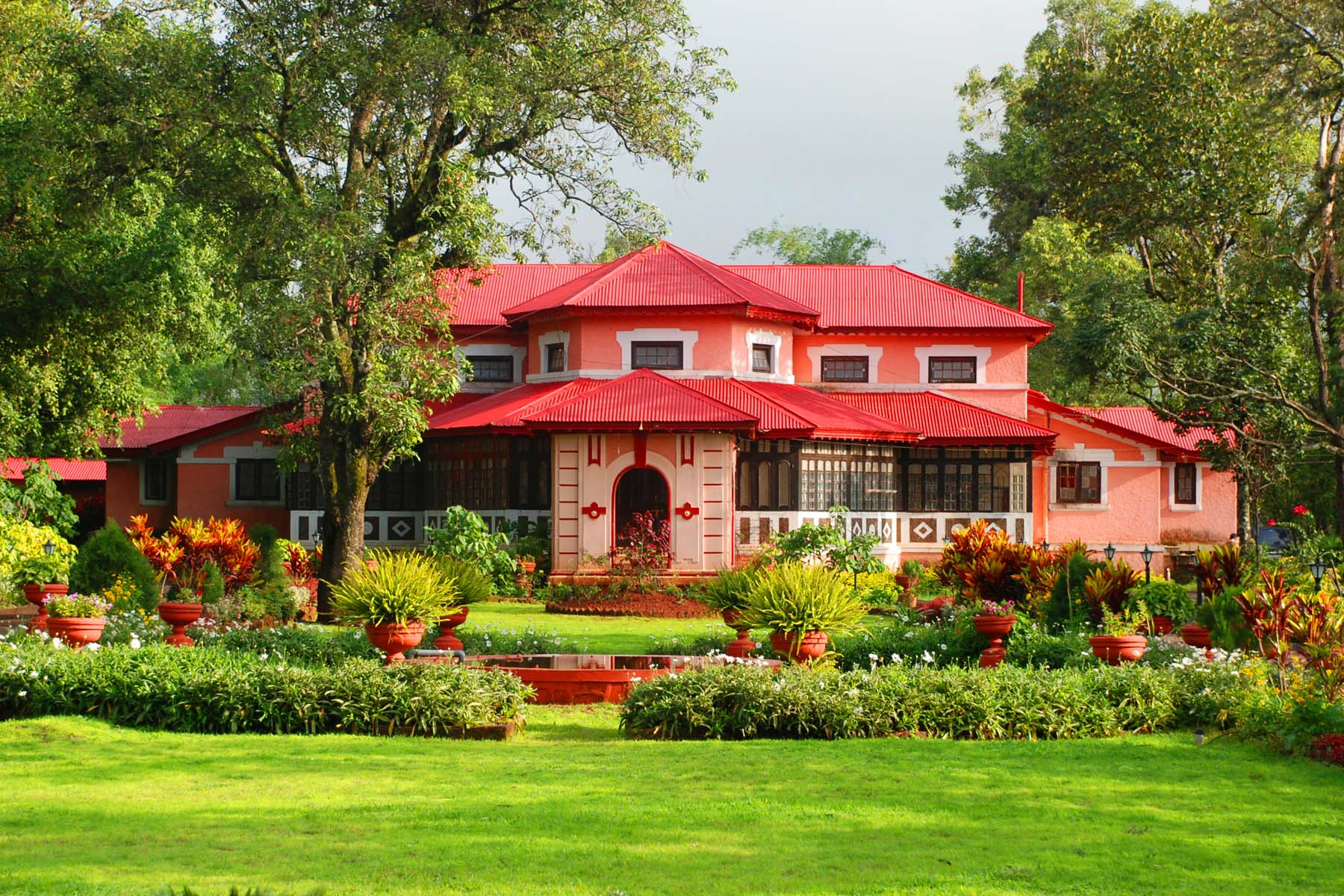
Local Figures & Organizations
While the British administration and missionary efforts shaped the early structure of formal schooling, local individuals and community-led organisations played an equally important role in expanding access to education in Satara. Many of these efforts laid the foundations for institutions that continue to serve the district today.
Bhaskar Sakharam Purohit was among these figures and established an English school in 1878–79, one of the earliest privately run schools in the district. The Satara Education Society, founded in 1939, became one of the region’s oldest educational organisations, promoting the importance of education and helping establish early schools.
Traditional forms of learning also continued during this period. The Sanskrut Pradnya Pathshala, opened in Wai on 1 July 1920, offered instruction in Sanskrit grammar and literature. Its presence illustrates how older pathshala systems coexisted with new schooling models, even during this period of transition.
Nana Patil
Krantisinha Nana Patil (1900–1976) was a prominent freedom fighter, social reformer, and education advocate from Satara district. Born in Yede Machchindra village in Walva taluka to a Maratha farming family, he witnessed rural poverty and exploitation early on. These experiences shaped his commitment to addressing social and economic injustice. Inspired by Mahatma Phule’s Satyashodhak Samaj, he became active in the Indian National Congress and worked with rural communities from 1930 onwards.
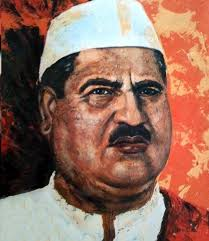
During his time with the Congress, Patil travelled extensively through the villages of southern Satara. He is known for organising awareness campaigns, delivering speeches in simple language, and motivating villagers to resist oppressive officials and support the national movement. His role was especially significant during the Quit India Movement of 1942, when he gained national recognition for establishing a Parallel Government (Prati Sarkar) in Satara. Under his leadership, the Tuphan Sena (Storm Force) was formed to carry out guerrilla resistance against British rule.
Alongside political resistance, Patil promoted social reforms, including the removal of untouchability, women’s rights, and expanded access to education. He believed that education outside the classroom could transform rural life. Through the Prati Sarkar, he helped start local schools and adult literacy initiatives, aiming to empower villages to manage their own affairs independently of colonial structures. He also founded several formal institutions, including the Nana Patil College of Education, years after independence.
Karmaveer Bhaurao Patil
Karmaveer Bhaurao Patil (1887–1959) was an influential educationist and social reformer. Born in Kumbhoj, Kolhapur, into a Jain farming family, Patil was deeply influenced by the work of Chhatrapati Rajarshi Shahu Maharaj. In 1919, he founded the Rayat Shikshan Sanstha at Kale, dedicated to providing educational opportunities for students from marginalised and economically disadvantaged communities.
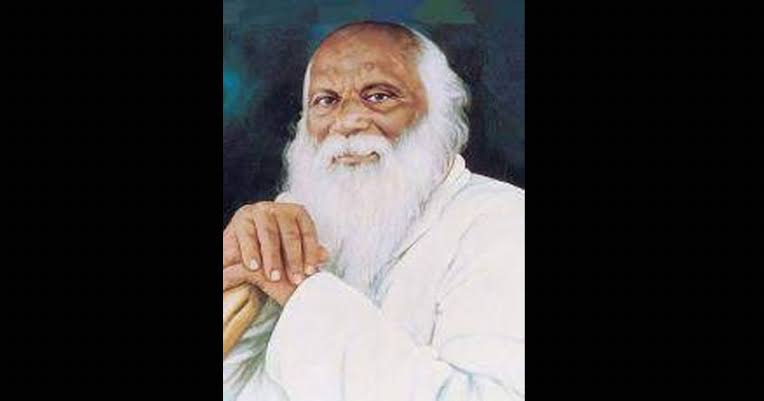
In 1919, Patil founded the Rayat Shikshan Sanstha at Kale, Satara district. The organisation focused on expanding educational opportunities for students from lower castes and economically disadvantaged backgrounds. Under Patil’s leadership, the Sanstha grew into one of the largest rural educational networks in Maharashtra, setting up schools and colleges across Satara and neighbouring districts.
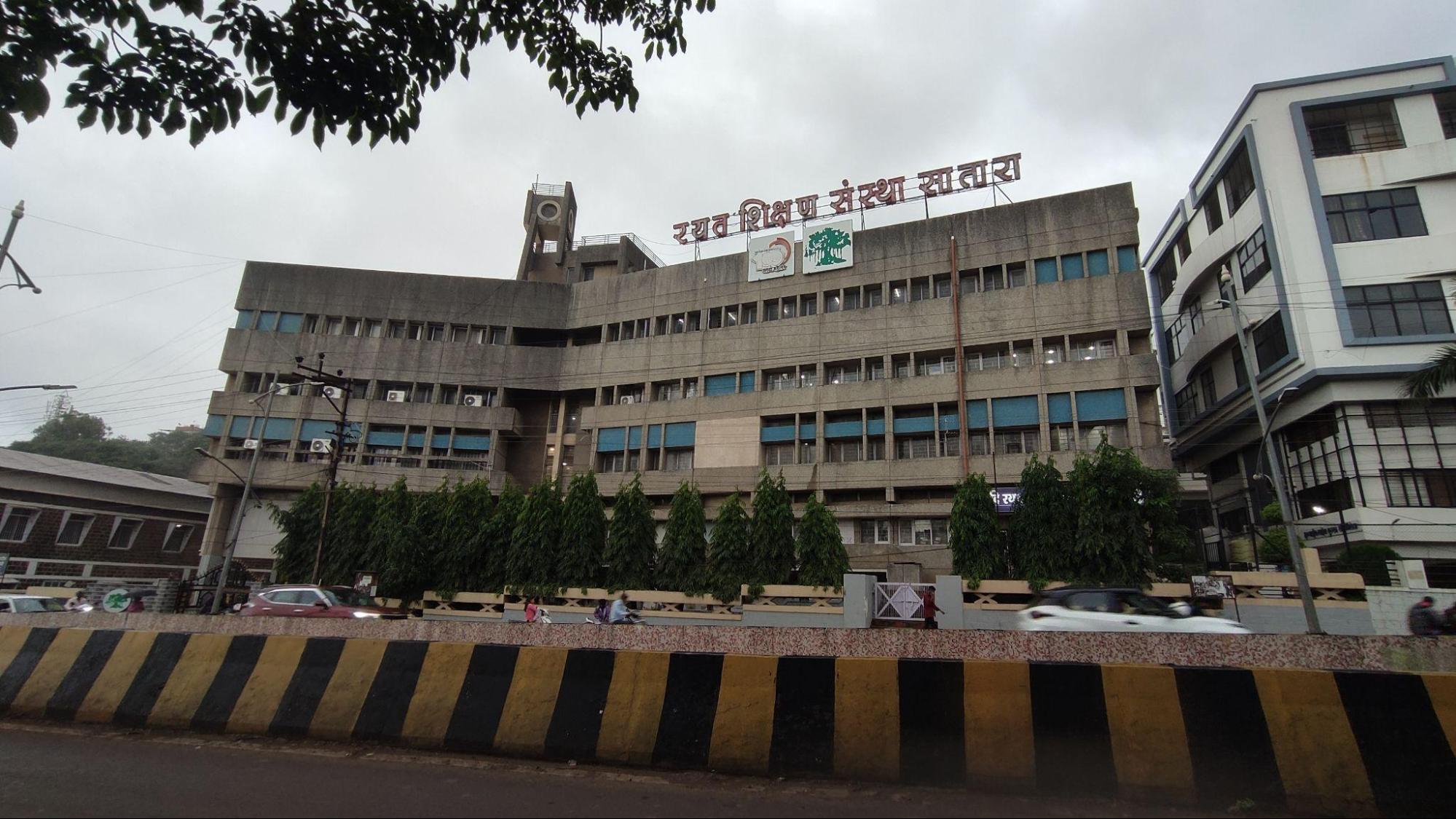
Patil promoted the “earn and learn” principle, encouraging students to work while studying to support their education and families. This model aimed to develop self-reliance and ensure that students could continue their education without financial barriers. He was also a vocal advocate for compulsory primary education in the state. He travelled widely, organising community meetings and campaigns to press for government reforms to make basic education accessible to all children.
For his contribution to education and social upliftment, Patil was awarded the Padma Bhushan in 1959. The Rayat Shikshan Sanstha continues to operate with the motto “Education through self-help is our motto,” carrying forward Patil’s vision of practical education as a means of social equality and empowerment.
Post-Independence Era and Contemporary Educational Infrastructure
Following India's independence, the education system in Satara underwent major transformations. The introduction of structured education levels, pre-primary, primary, secondary, and higher education, and the implementation of National Education Policies heavily shaped the educational landscape of the district. Over the years, the education sector has developed with contributions from both government-funded institutions and private organizations. Additionally, Educational boards were also introduced, each offering distinct curricula and standards, providing students with more choices.
Primary & Secondary Education
During the colonial period, both public and private efforts in education primarily focused on primary and secondary schooling, as indicated by data from district gazetteers across Maharashtra. Higher education remained underdeveloped in most districts, including Satara, with gradual improvements over time. While basic infrastructure for primary and secondary education existed, its expansion was closely tied to increasing enrollment and greater involvement of local figures.
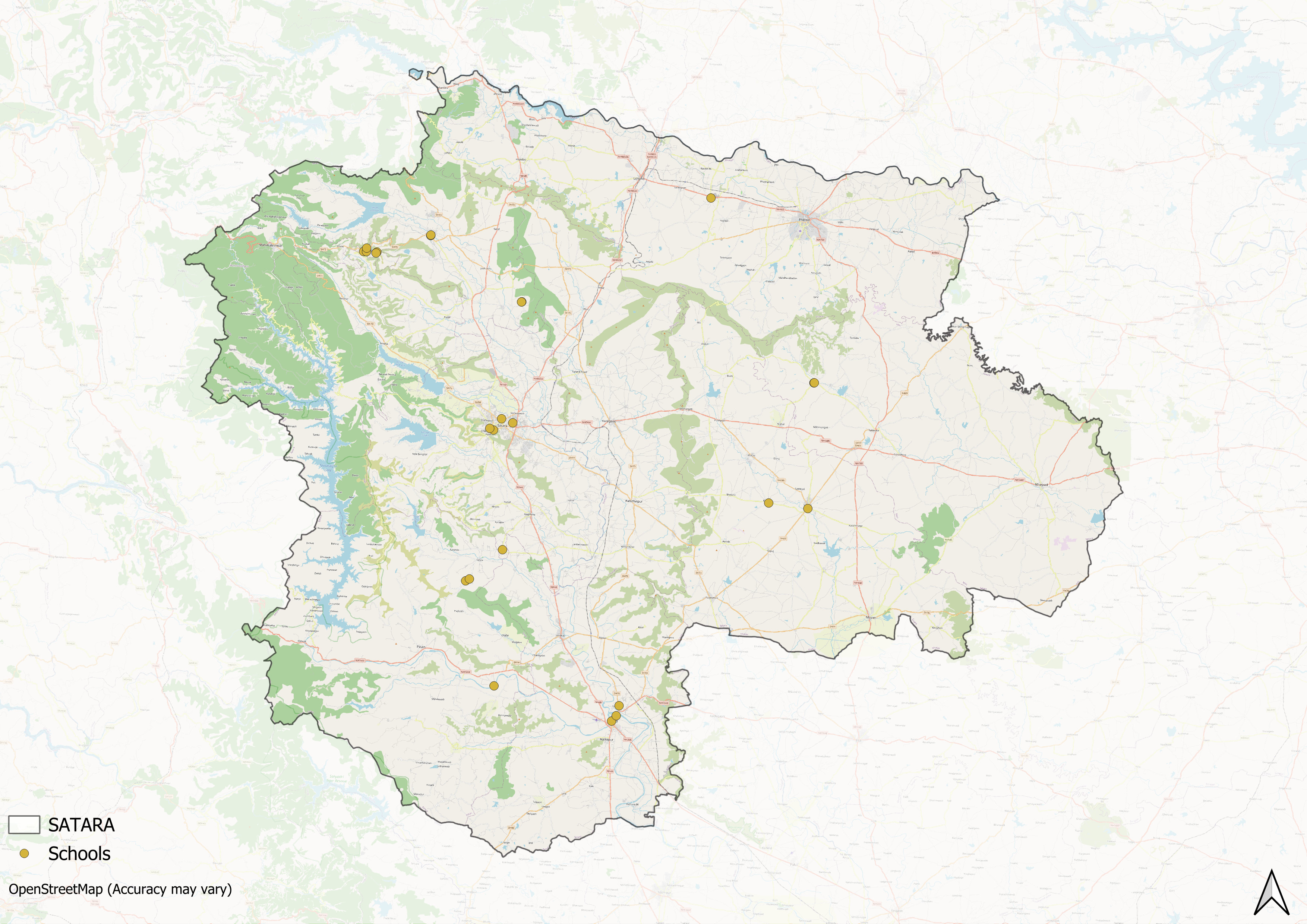
Today, this expansion is evident in the widespread presence of schools across various wards of Satara, with available data reflecting the steady growth of educational institutions in both urban and rural parts of the district.
Over the years, various school boards have shaped Satara’s education system. Locals say that the Maharashtra State Board remains the most widely followed, conducting the Secondary School Certificate (SSC) and Higher Secondary Certificate (HSC) examinations. Many private schools in the district are also affiliated with the Central Board of Secondary Education (CBSE), and a smaller number follow the Indian Certificate of Secondary Education (ICSE) curriculum.
Institutions of Higher Learning
Perhaps one of the most notable changes in Satara’s educational landscape is tied to the establishment of higher education institutions. While primary and secondary schooling expanded steadily, opportunities for advanced education remained limited for much of the district’s history. Over time, local leaders and organizations played a crucial role in addressing this gap, leading to the creation of several colleges. As a result, many institutions in the district today are privately managed, semi-private, or autonomous.
Chhatrapati Shivaji College
Chhatrapati Shivaji College was established in 1947 by the Rayat Shikshan Sanstha as its first institution for higher learning. An interesting story is tied to its naming; it is said that once a wealthy donor offered a large sum on the condition that the college bear his name, but Karmaveer Bhaurao Patil declined, choosing instead to name it after Chhatrapati Shivaji Maharaj.
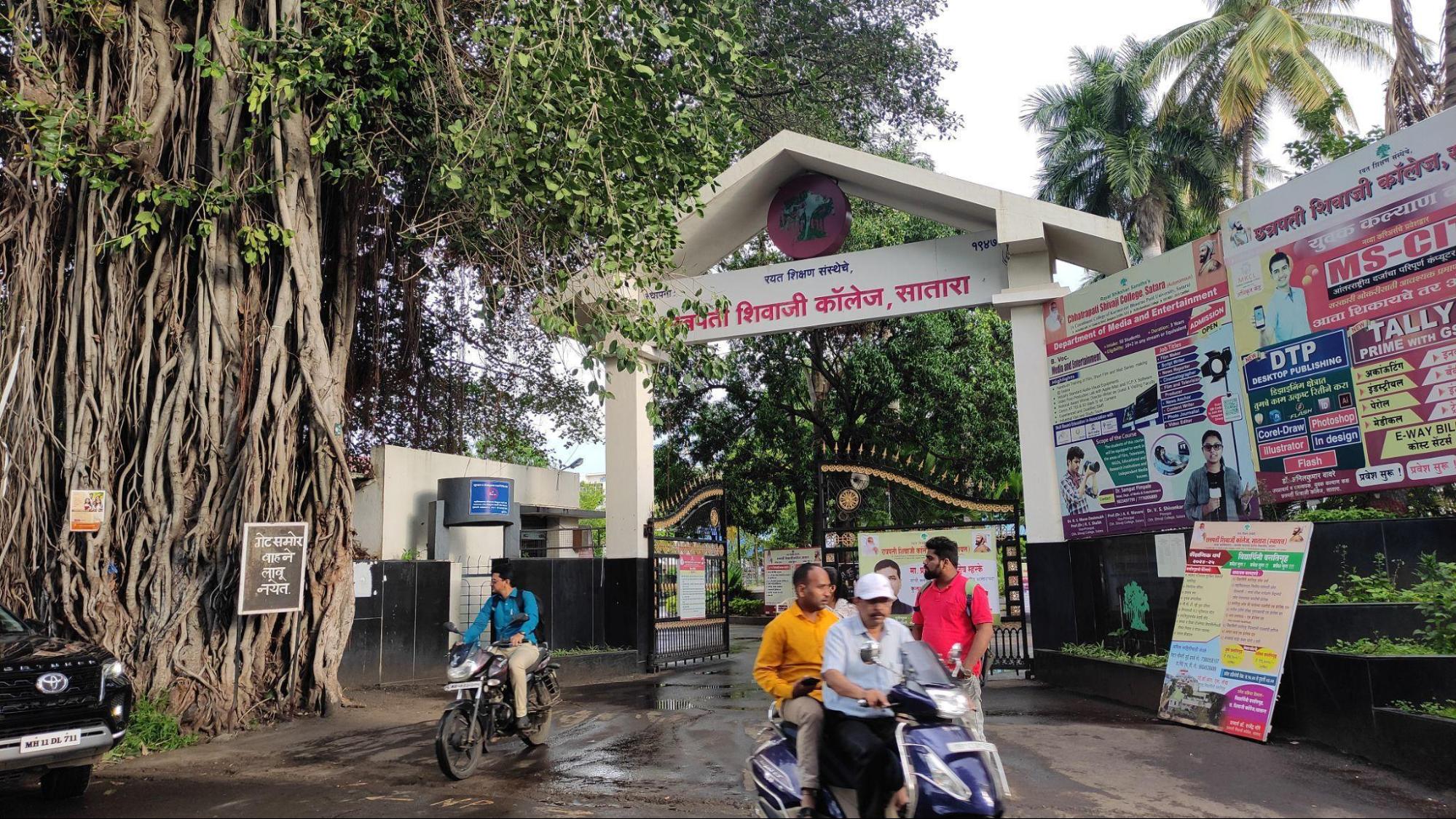
Classes were first conducted in the Phaltan Lodge, which had been the summer residence of Shrimant Malojirao Naik Nimbalkar, the Rajesaheb of Phaltan. He donated 10.5 acres of land and the building for the college, supporting Patil’s vision for affordable higher education.
When it opened, the college had only 17 students. It adopted a model combining free tuition with residential facilities, designed as a modern Gurukul to make education accessible regardless of economic background. However, due to financial constraints, tuition fees were introduced from the 1951–52 academic year.
The college began with an arts stream and later expanded its curriculum. It is well known for the “Earn and Learn Scheme,” which encourages students to work while studying to help fund their education.
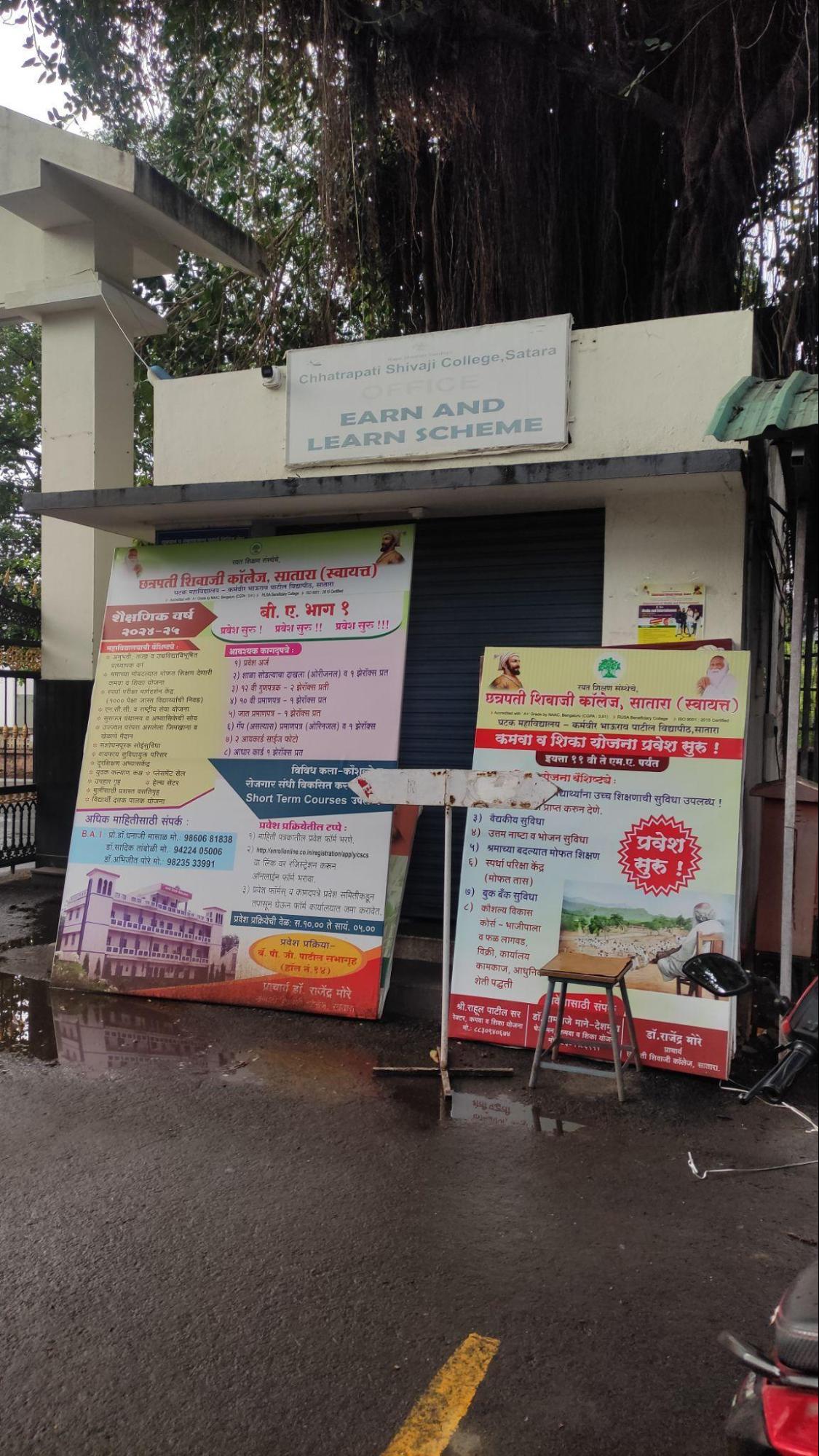
Yashwantrao Chavan Institute of Science, Satara
The Yashwantrao Chavan Institute of Science originally functioned as part of Chhatrapati Shivaji College and later evolved into a separate institution. It now offers a range of science courses from the 11th standard to postgraduate levels and is one of Satara’s main centres for science education.
Dhananjay Gadgil College of Commerce
The Dhananjay Gadgil College of Commerce was established in 1971 and is named after Dhananjay Gadgil, the noted economist and former vice chairman of the Planning Commission of India. The college offers undergraduate and postgraduate courses in commerce and related fields.

Ismailsaheb Mulla Law College
Ismailsaheb Mulla Law College was founded in 1968 and is one of the only law colleges in Satara district. Named after Adv. Ismailsaheb Mulla, the college offers LLB, LLM, and PhD programmes for students pursuing legal education and research.

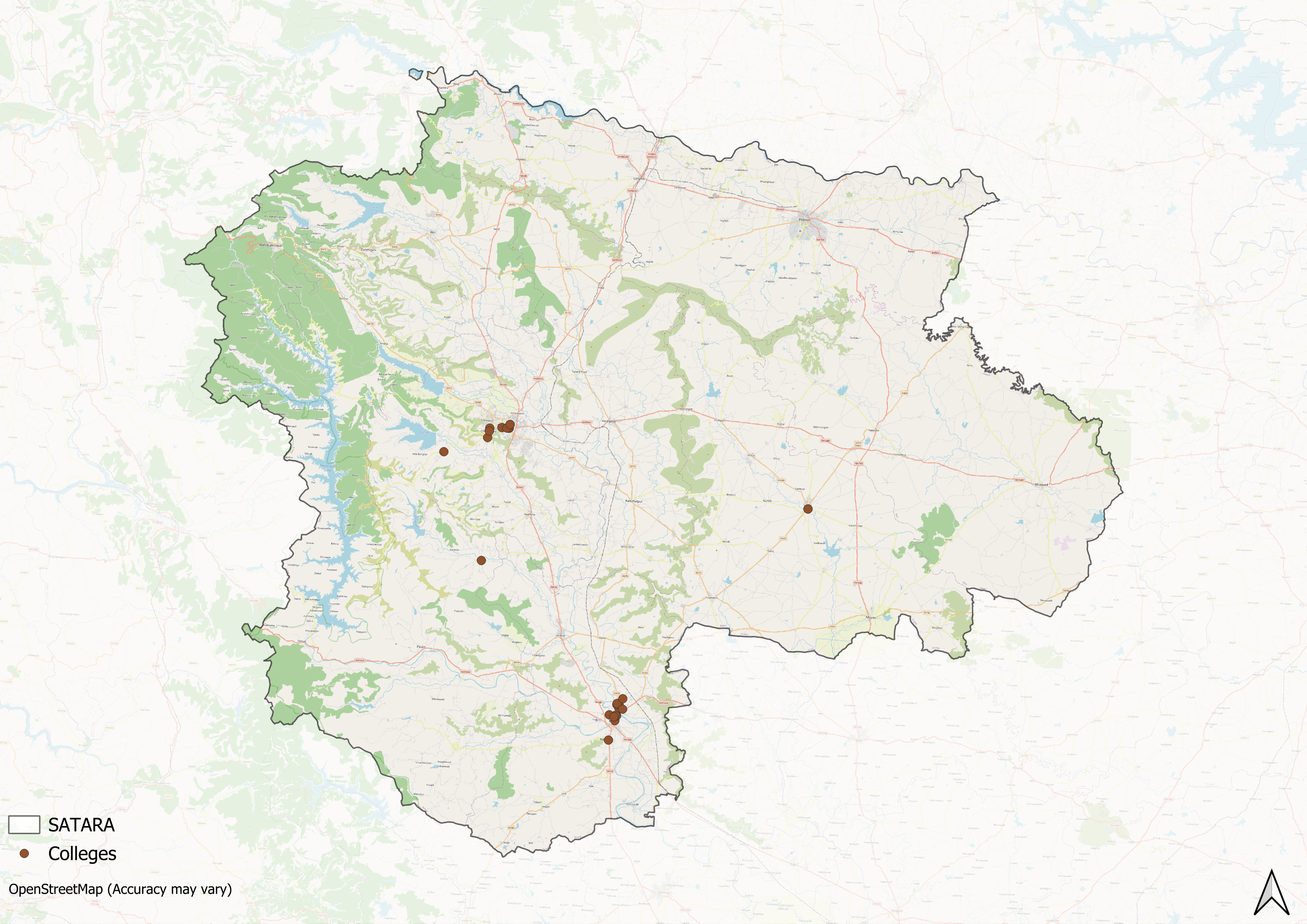
In addition to these institutions, a number of centres for higher education operate throughout the district, which offer programmes across various disciplines. While the landscape of higher education has broadened significantly since independence, disparities in access, particularly along geographic lines, remain evident.
Prominent Figures & Organizations
Yashwantrao Chavan
Yashwantrao Balwantrao Chavan (1913–1984) was a leading political figure who played a major role in India’s independence movement and the development of Maharashtra after independence. Born in Karad (a village that now lies in Sangli), Chavan took part in the Civil Disobedience Movement and the Quit India Movement, which shaped his early political career and commitment to public service.
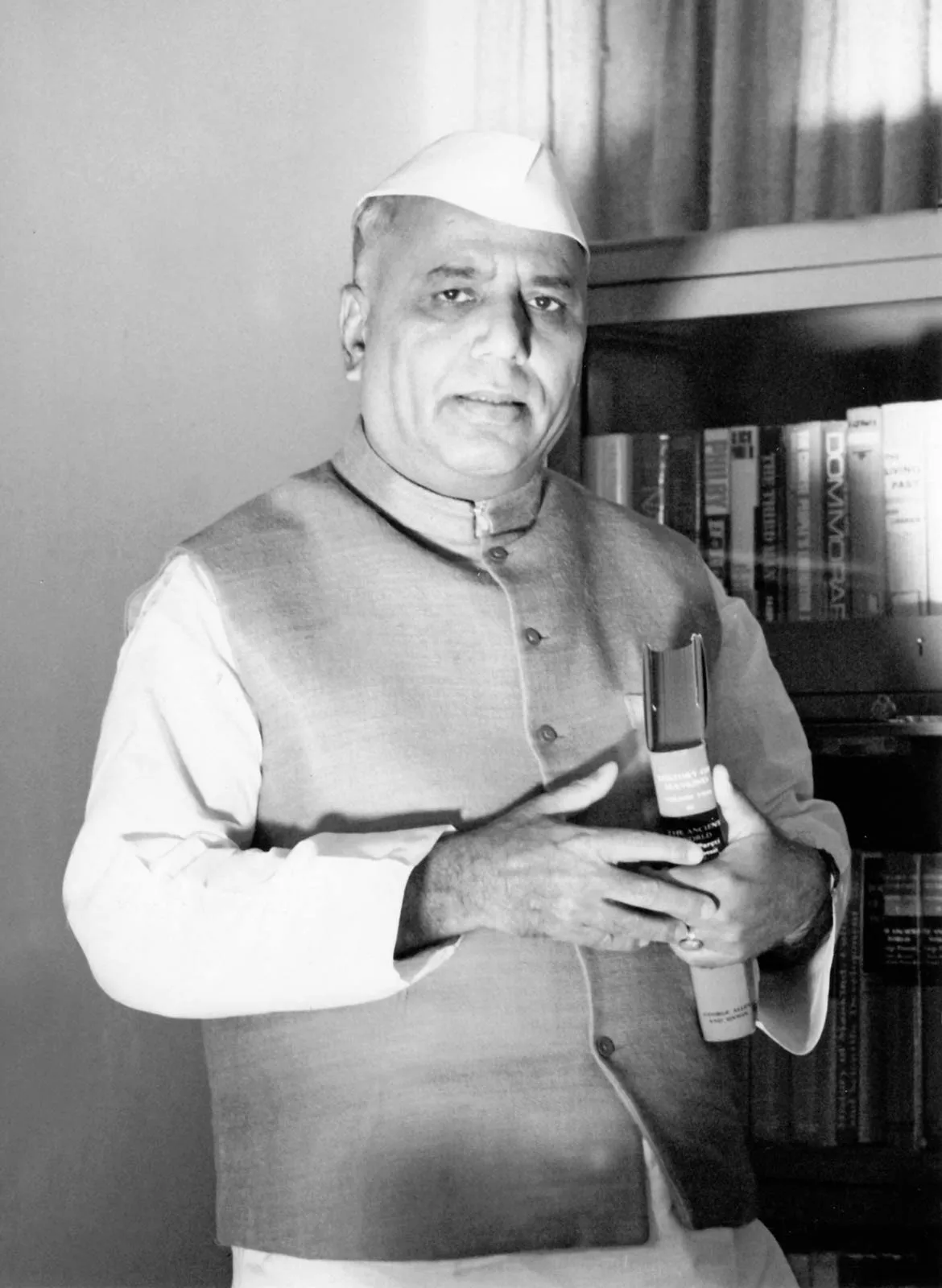
Chavan was elected to the Bombay Legislative Assembly in 1946 and held several key positions, including Minister of Civil Supplies. After the formation of Maharashtra in 1960, he became its first Chief Minister, laying the foundation for policies focused on infrastructure, agriculture, and education.
One of Chavan's most notable contributions to education was the establishment of Sainik School Satara in 1961. As part of a national initiative to prepare students for the National Defense Academy (NDA) and similar military institutions, this school embodies the motto “Knowledge, Discipline, and Patriotism.” Chavan envisioned it as a place that nurtures holistic individuals who would serve their country with dedication.
One of his key contributions in Satara was the establishment of Sainik School Satara in 1961. Part of a national network of military schools, Sainik School Satara was created to prepare students for the National Defence Academy and similar institutions. The school combines academics with physical training and discipline, following the motto “Knowledge, Discipline, and Patriotism.” The campus includes classrooms, laboratories, sports facilities, and hostels, supporting holistic development and leadership training.
Graphs
Enrollment and Dropout Rate
Schools
Teachers
Sources
Bharat Kavathekar. 2023. Karmaveer Bhaurao Patil Life and Work of a Rebel. Sakal Publications.https://sakalpublications.com/index.php?id_p…
Chhatrapati Shivaji College. About College. CSC.http://csc.ac.in/about-college/
Dr. Bhavana Patole. “Leadership of Yashwantrao Chavan in Modern Maharashtra: historical review”. Golden Research Thoughts.https://oldgrt.lbp.world/UploadedData/720.pdf
Gazetteers of Bombay Presidency. 1885 (reprinted 1989). Satara District Vol XIX. Gazetteers Department, Government of Maharashtra, Mumbai.
Maharashtra State Gazetteers. 1963. Satara District Gazetteer. Gazetteer Department, Government of Maharashtra, Mumbai.
Pallavi Smart. 2024. “Maharashtra Village School Seeks to Revive Ancient Modi Script.” The Indian Express.https://indianexpress.com/article/cities/mum…
Prof. Vikas Bhanudas Takale and Dr. Nandakumar Dnyanovba Jadhav.2023. “Study of the Glorious Academic Work of Karmaveer Bhaurao Patil.”Research Guru, Online Journal of Multidisciplinary Subjects.Vol. 13, no. 1.https://www.researchguru.net/volume/Volume%2…
R. R. Patil College. Karmaveer Bhaurao Patil College.https://www.rrpatilcollege.com/kbp.php
Sarah H. 2021. “Freddie Mercury’s Legend Lives on in a Small Boarding School in Panchgani.” Homegrown.https://homegrown.co.in/homegrown-voices/fre…
Shivaji University. “Development of Education in Satara Taluka Since Independence". Shivaji University Institutional Repository.http://ir.unishivaji.ac.in:8080/jspui/bitstr…
Last updated on 28 July 2025. Help us improve the information on this page by clicking on suggest edits or writing to us.